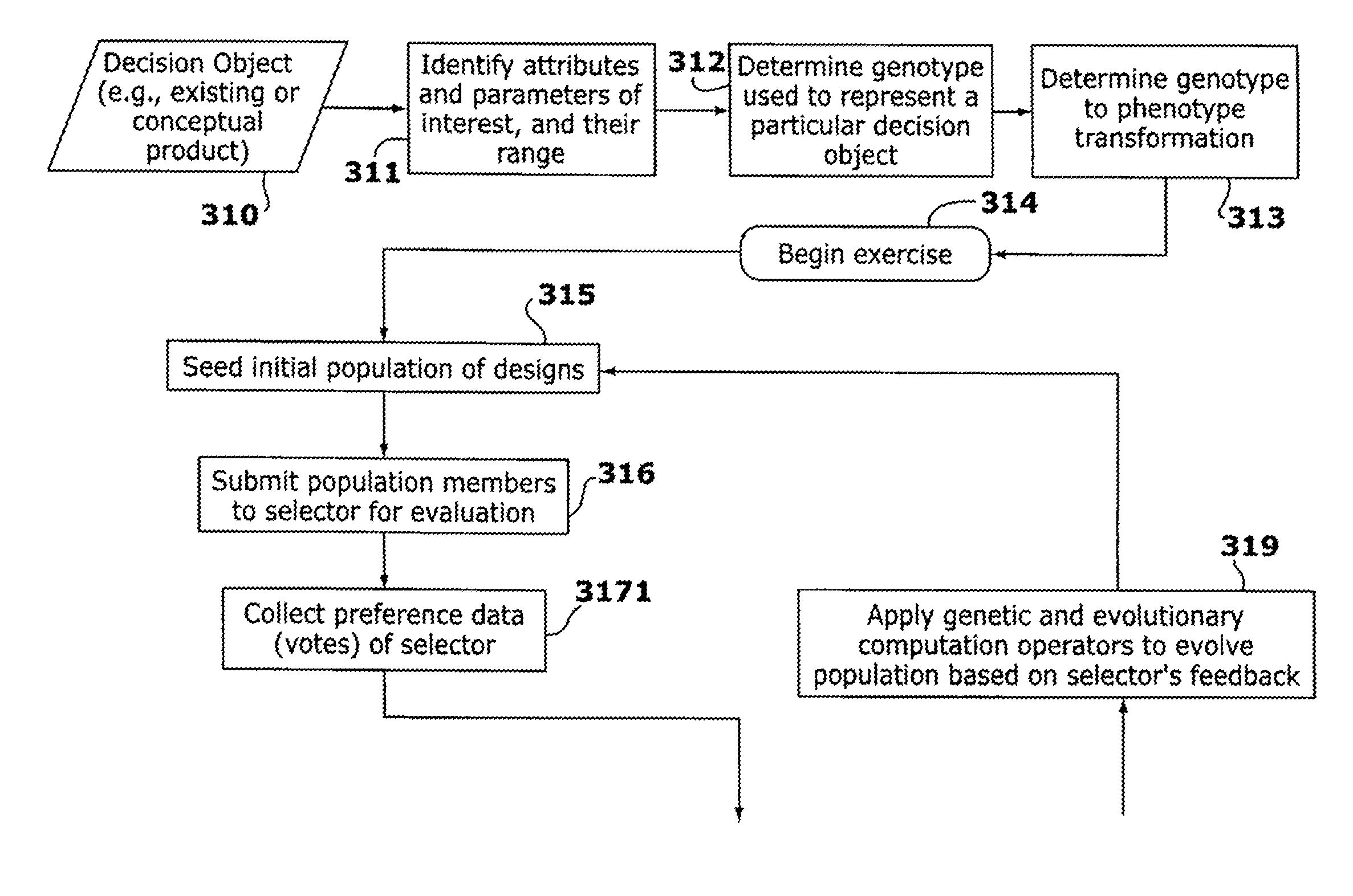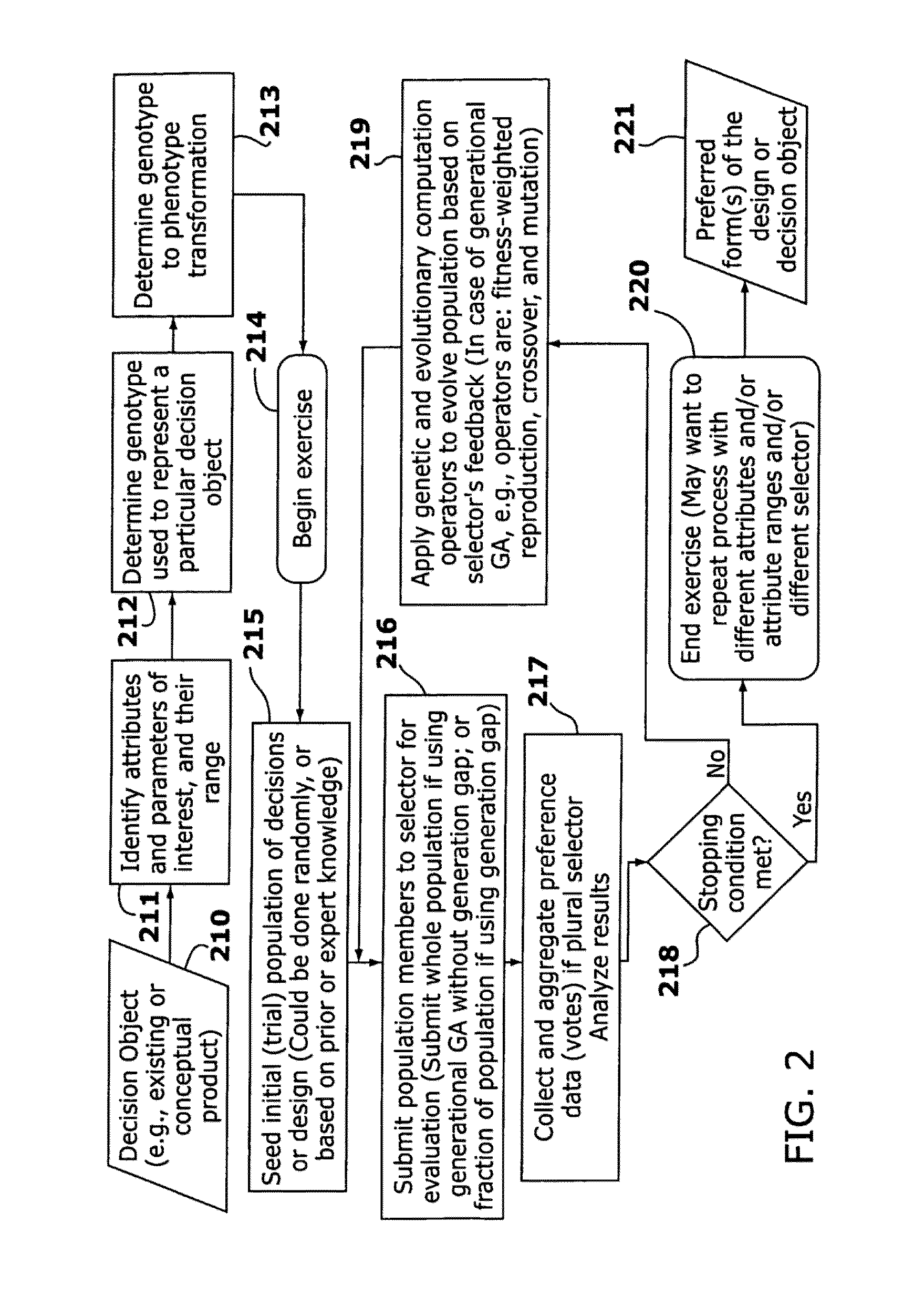Furthermore, the development lead-time for some products can easily stretch to many years (e.g., new generation aircraft).
The complexity of these products and services, and of the processes used to develop them, is reflected in the organizational structure of the companies that design and make them.
In recent years, as consumers have grown increasingly sophisticated and knowledgeable, and as markets have become increasingly fragmented, this job has become more difficult.
The process of going from the
voice of the customer to a product or service that reflects it remains fraught with errors and the potential for distortions.
The first source of error is in ascertaining the wants and needs of the customer; the second is in the process of translating that input into a decision, product, artifact or service without coloring and distorting it.
These tools represent significant improvements in the
product design and development process, but remain cumbersome and difficult to use, as their protagonists point out, and they require significant commitments of time and effort on the part of their users.
One problem with
consumer clinics is that potential customers are typically shown, and asked to comment on, a limited number of alternatives.
Another reason is that the designs shown to the participants are in the form of models or prototypes that are costly to produce.
Conversely, it is not uncommon for people's assessment of the attractiveness of a new product to plummet after the novelty wears off.
Due to their compressed format, focus groups and
consumer clinics are vulnerable to this phenomenon.
Another problem with clinics and focus groups has to do with the interpersonal dynamics that the situation entails.
Problems arise when one or a few strong individuals end up dominating and biasing the discussion.
Another difficulty is finding participants who do not know one another.
Similar problems arise when the potential customers for a product happen to be competitors, and therefore less willing to sit together and share their preferences.
In such cases, many participants find it difficult to express their true opinions in front of the group.
This adds to the cost of using that format for eliciting consumer preferences.
Solving these search problems is a hard computationally; mathematically, these are known as NP-Hard problems, requiring
heuristic dynamic programming procedures for their solution.
The first is the tediousness of participating in the process as a respondent.
The laboriousness of the process often leads to
confusion and loss of attention and focus on the part of the respondents, who often end up resorting to
heuristics as a shortcut for getting through the questionnaire.
For example, instead of properly weighing all the attributes against one another, they only rely on one or two to make their decision, leading to inaccurate results.
The problem with that approach is the danger of reification of any preconceived notions or partial, ill-formed preferences the respondent might have a priori, resulting in a sub optimal to the
product design problem.
It does not however address the problem described above.
It is highly computationally intensive procedure however, requiring several hours of
running time on a typical
personal computer; it is therefore not very useful in a real-time online context.
The problem with that work-around is that it is highly deleterious to the respondent
workload.
The “main-effects only” nature of
Conjoint Analysis has a more subtle and insidious effect, as it affects how many marketers and product developers come to think about their products and services.
The result is an artificially good fit to the additive partworths model, but poor predictive accuracy.
More fundamentally, the very notion that a product or service can be adequately described to a consumer by a set of attribute levels is itself problematic.
Since it works by presenting decomposable stimuli to the respondent,
Conjoint Analysis is particularly ill-suited for understanding how consumers evaluate important classes of products, namely, products that are perceived holistically by the consumer.
Even though a perfume expert (known as a “
nose” in the trade), upon smelling a scent, may be able to analyze it and describe its major attributes, that faculty is not available to the majority of perfume buyers.
In such cases, where the respondent cannot break the stimulus presented to him or her into component parts or attributes, attempting to build simple models of the respondent's preference based on factorially designed studies is unlikely to succeed.
Such solutions are not appropriate for addressing the need to analyze content generated in the context of product or service innovation surveys, where studies can range across disparate domains, from life sciences to consumer
electronics to fast-moving consumer goods to consumer
electronics; and where product categories within one domain may have few commonalities (e.g., frozen dinners and
laundry detergents, in the case of consumer goods).
However, this method can be ineffective in that the
consensus list follows the free associations of the respondents.
This can lead to results that are not useful if the respondents wander off topic in their answers.
Further, the
user interface is text based so that the utility is limited when graphic input is to be used.
 Login to View More
Login to View More  Login to View More
Login to View More 


